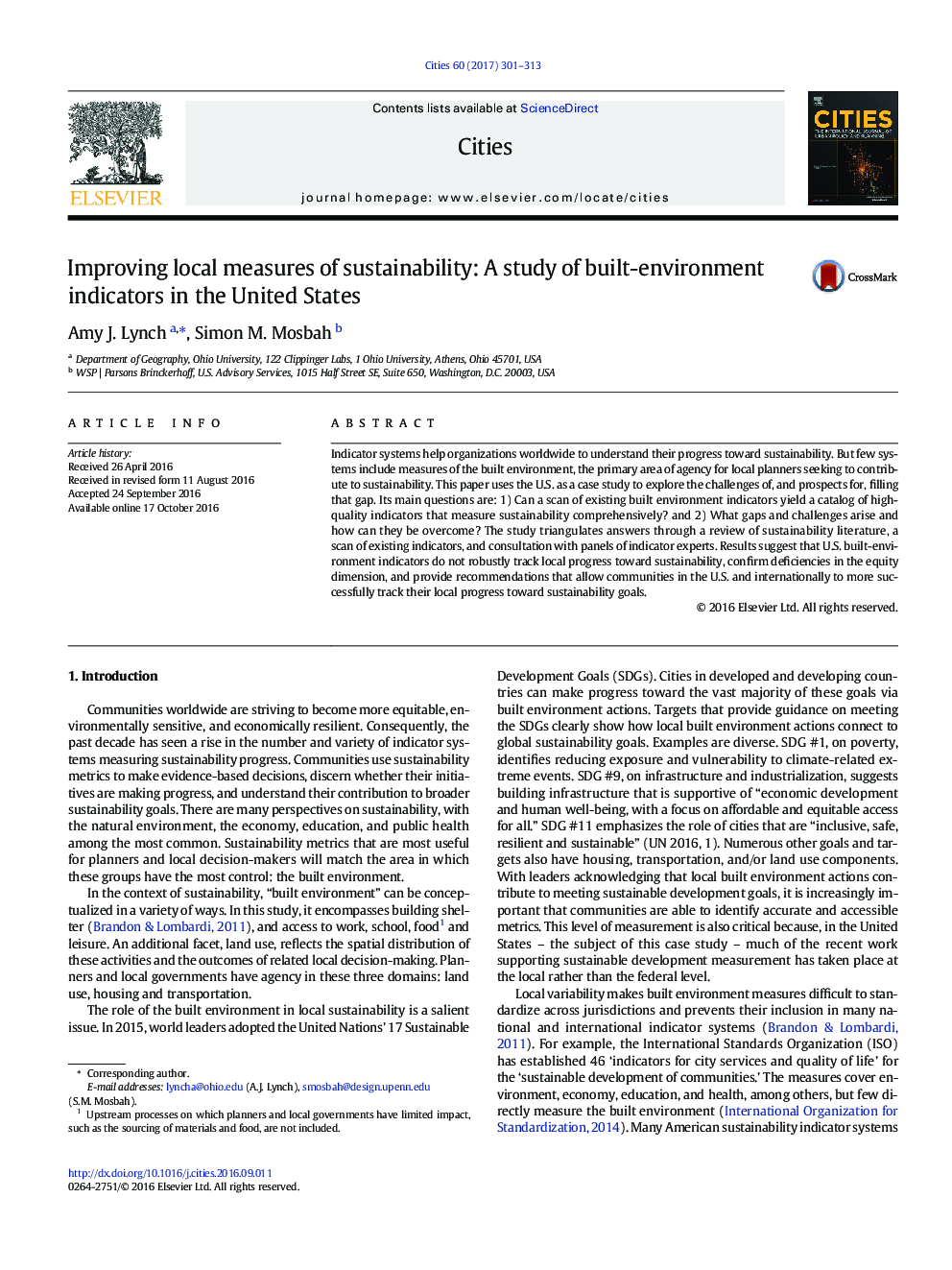| Article ID | Journal | Published Year | Pages | File Type |
|---|---|---|---|---|
| 6481287 | Cities | 2017 | 13 Pages |
â¢Existing US built environment indicators do not adequately track progress toward sustainability.â¢Standard sustainability indicator systems often exclude local built environment measures.â¢Many communities adopt the same inadequate or incomplete built environment measures.â¢Literature and practice suggest that local systems are deficient in equity and economic measures.â¢Experts suggest creating an equity measure and multiple metrics for each indicator.
Indicator systems help organizations worldwide to understand their progress toward sustainability. But few systems include measures of the built environment, the primary area of agency for local planners seeking to contribute to sustainability. This paper uses the U.S. as a case study to explore the challenges of, and prospects for, filling that gap. Its main questions are: 1) Can a scan of existing built environment indicators yield a catalog of high-quality indicators that measure sustainability comprehensively? and 2) What gaps and challenges arise and how can they be overcome? The study triangulates answers through a review of sustainability literature, a scan of existing indicators, and consultation with panels of indicator experts. Results suggest that U.S. built-environment indicators do not robustly track local progress toward sustainability, confirm deficiencies in the equity dimension, and provide recommendations that allow communities in the U.S. and internationally to more successfully track their local progress toward sustainability goals.
